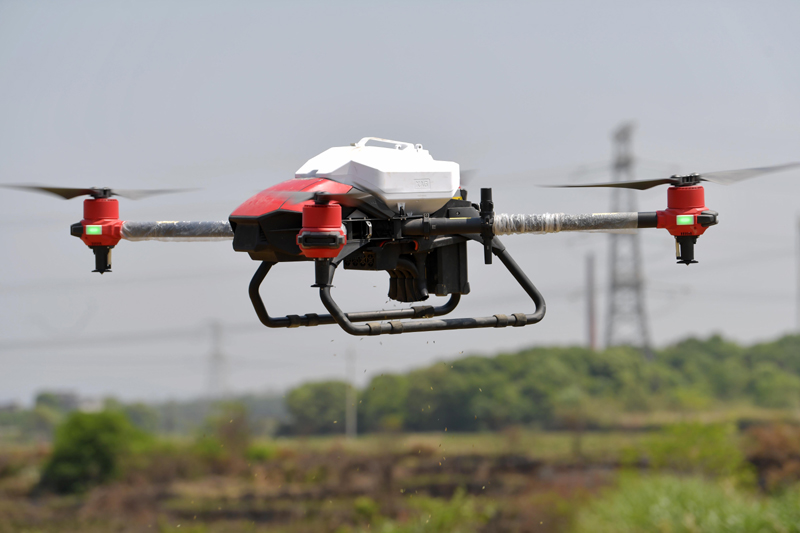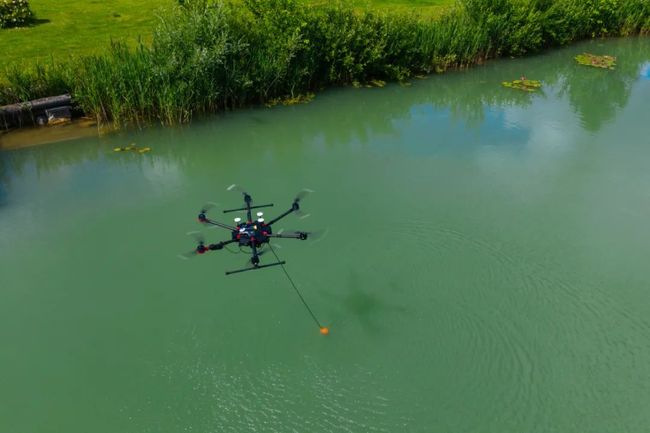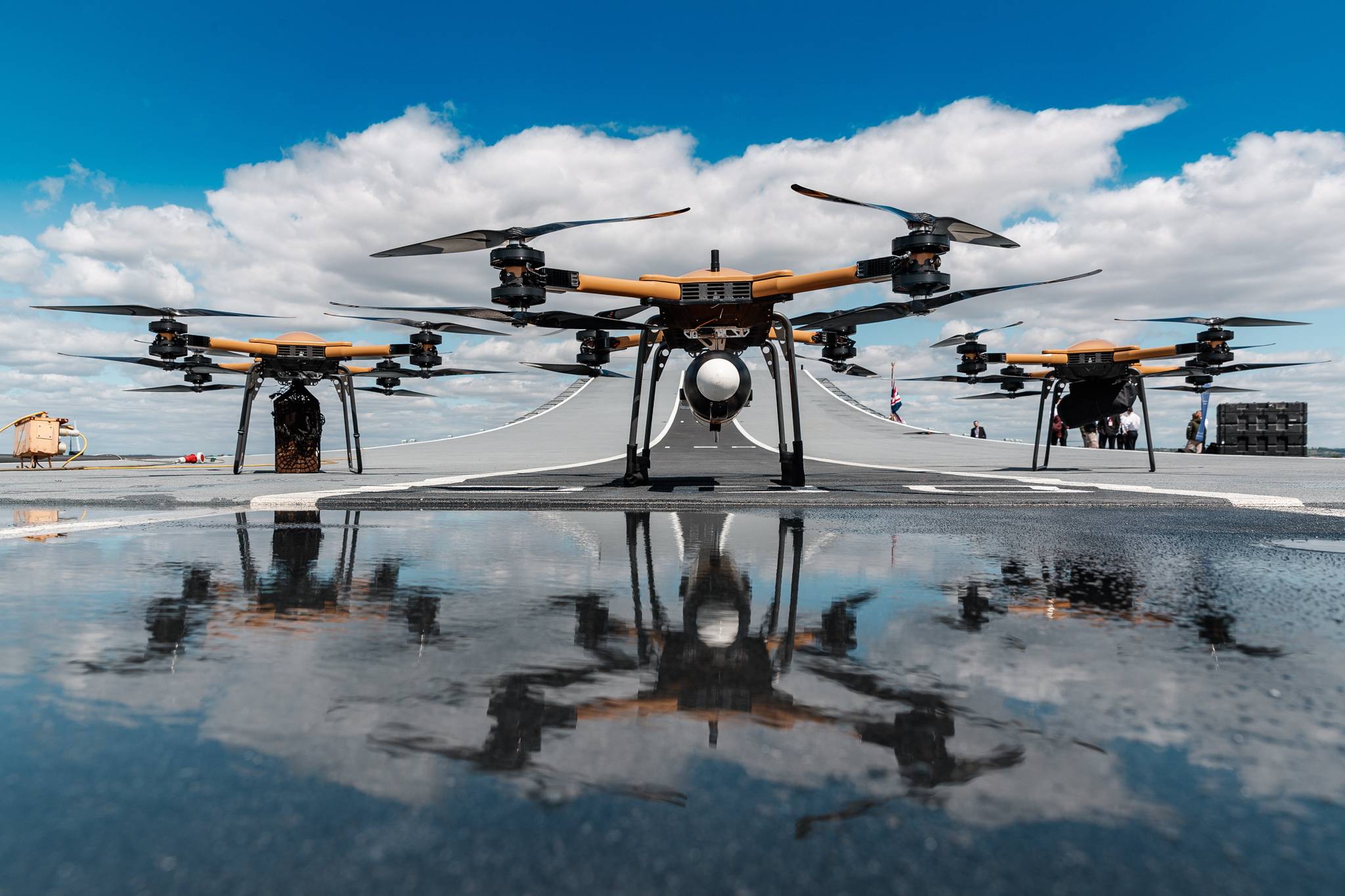
Trends and Technological Innovation Prospects of the Drone Industry in 2025
three hundred and fifty-eight
Outlook for the Five Major Trends of the Drone Industry in 2025
With the rapid development of technology, the drone industry is undergoing a comprehensive upgrade and innovation. Looking ahead, the five major trends will lead the industry to new heights. These trends will not only drive the continuous advancement of drone technology, but also bring unprecedented convenience and changes to our lives.
01 Trends in the drone industry
△ Technological innovation and intelligent development
With the deep combination of artificial intelligence and edge computing, UAV technology will enter a new stage of development. In the future, UAVs will be equipped with more powerful edge computing chips, such as brain like chips and special AI processors, to achieve real-time data processing and intelligent decision-making. In the field of power inspection, drones can use AI image recognition technology to automatically detect and mark equipment defects, such as insulator damage and rust, with an expected accuracy rate of over 95%. In addition, agricultural drones can adjust pesticide spraying paths in real-time through multispectral analysis technology, achieving precision agricultural management. At the same time, the maturity of multi machine collaboration technology enables drone clusters to collaborate and link with heterogeneous devices such as unmanned vehicles and robots. For example, in disaster rescue scenarios, drone swarms can quickly construct 3D disaster maps, while unmanned vehicles synchronize the transportation of supplies, forming an efficient "air ground integrated" emergency network. In terms of energy and power, the commercialization of solid-state battery and hydrogen fuel cell technology will enable the endurance time of unmanned aerial vehicles to exceed 2 hours, and the load capacity will be significantly increased to over 50kg. There may even be a photovoltaic hydrogen hybrid power system to support all-weather operation of unmanned aerial vehicles.
Expansion of application fields
In the field of energy, the application of drones has gone beyond simple inspection work and achieved a transformation towards equipment lifecycle management. For example, in the field of wind power, drones are equipped with laser radar technology to perform precise micro crack detection on blades, while combining digital twin technology to predict the remaining life of the equipment. In the detection of oil and gas pipelines, the cost of leak monitoring can be reduced by 50% compared to traditional manual inspection methods through gas sensors equipped with drones.
The field of logistics and urban air traffic (UAM) is also undergoing changes. The low altitude logistics network is gradually being constructed, and companies such as SF Express in China and Zipline in the United States have started normalized drone operation services in remote areas and medical emergency fields. However, the management rules of urban airspace still need to be improved to solve the dynamic avoidance problem between drones and manned vehicles.
In addition, drones will also serve as "dynamic perception terminals" for smart cities, updating digital twin models of urban buildings, transportation, and environment in real-time. For example, Singapore has piloted the use of drones to monitor dust emissions at construction sites and directly integrated real-time data into government environmental platforms.
Reshaping the Global Competitive Landscape
With the acceleration of regulatory standardization, the International Civil Aviation Organization (ICAO) is committed to promoting the construction of a global unified framework for unmanned aerial vehicle airworthiness certification and airspace classification management (such as establishing exclusive airspace below 400 meters). In this process, Chinese companies such as Shenzhen DJI and Yihang have taken a leading position in the formulation of international standards with their technological strength. It is expected that by 2025, they will occupy up to 60% of the global industrial drone market share.
However, this also brings new challenges. The issues of data security and privacy protection are becoming increasingly prominent. The EU's "Drone 2.0 Act" requires data to be stored locally, which means that Chinese companies need to adapt to compliance requirements in different countries. To address this challenge, companies can consider adopting blockchain technology to encrypt flight data and provide traceable verification to ensure data security and compliance.
In addition, emerging markets such as Southeast Asia and Africa have skipped the traditional infrastructure construction stage and directly adopted drone technology to achieve applications such as power grid inspection and agricultural digitization, which has also brought new market opportunities for Chinese drone companies. For example, Zipline in Rwanda has established a blood transportation network covering 80% of medical institutions nationwide, fully utilizing the advantages of drone technology.
△ Business model innovation
With the continuous development of drone technology, its business model is also gradually evolving. In the past, the UAV industry mainly relied on hardware sales to make profits. However, by 2025, this model is gradually changing to "data service subscription system". Taking agricultural drones as an example, companies are no longer just satisfied with selling equipment, but are beginning to provide crop analysis services based on farmland area, including professional crop growth monitoring and analysis reports, aimed at helping farmers achieve scientific planting. This innovative model not only provides a stable source of income for enterprises, but also further deepens cooperation with customers, making services more in line with user needs.
△ Collaborative and symbiotic ecosystem
Drone technology is deeply integrated with cutting-edge technologies such as 5G, the Internet of Things, and big data, jointly weaving a multi domain collaborative ecosystem. The high speed and low latency characteristics of 5G networks make drone data transmission smoother and more stable, enabling convenient remote control and real-time transmission of high-definition videos. The combination with the Internet of Things enables drones to seamlessly interact with various intelligent devices, obtain richer environmental information, and optimize flight paths and operational efficiency. The introduction of big data technology enables enterprises to deeply explore the potential value of drone data collection, providing scientific decision-making support for fields such as urban planning and resource management. For example, in urban traffic management, drones can use 5G and IoT technology to monitor road conditions in real time and provide feedback data to traffic command centers, providing strong support for traffic diversion.




